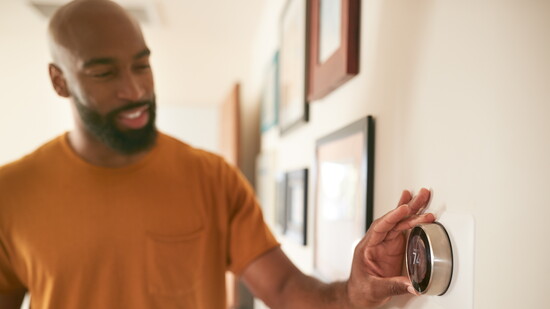There’s nothing quite like the heavy, sticky feeling of a humid home. Homeowners begin to see and feel the telltale signs: condensation on windows, a persistent dampness in the air, or even mysterious spots forming near vents. Left unchecked, high indoor humidity can invite mold, damage your home, and compromise indoor air quality. Fortunately, local HVAC professionals are ready to help homeowners take proactive steps to manage it.
“Humidity is a really common issue in this region,” said Ross Burns, HVAC Service Manager at Lee Company. “One of the biggest mistakes we see is homeowners leaving their thermostat set to ‘on’ instead of ‘auto.’ That keeps air circulating all the time, even when the system isn’t cooling, and that actually pushes moisture back into the house.”
According to Burns and Caleb Farrar, Operations Manager at Lee Company, maintaining indoor humidity levels between 40 to 55 percent is ideal. But achieving that range requires more than just adjusting your thermostat. It’s about adopting a whole-home approach that includes proper HVAC maintenance, lifestyle adjustments, and sometimes professional intervention.
Excess humidity often reveals itself through subtle but serious symptoms. “You’ll usually see the first signs as spots on the walls or ceilings, especially around vents,” said Farrar. “That’s an early indicator that moisture levels are too high. If it continues, ductwork can start to sweat, which can lead to dripping and eventually mold.” These issues aren't just cosmetic. High humidity levels can warp wood, peel paint, and contribute to unhealthy indoor air. “People forget that it's not just the living areas you need to worry about,” Farrar added. “Humidity in the crawlspace can be just as damaging.”
Crawlspaces and basements often go unnoticed, but they can be major contributors to elevated indoor moisture. “Installing a vapor barrier and sealing the vents is one of the best things you can do,” Burns said. “A properly encapsulated crawlspace paired with a dehumidifier will make a big difference.” Lee Company also recommends routine inspections of HVAC drain lines, especially during peak seasons. “Check the condensate drain,” Burns noted. “If it’s buried in mulch or clogged, moisture won’t be removed efficiently.”
An HVAC system, when functioning properly, serves as the first line of defense against indoor humidity. However, Farrar emphasized the importance of regular service. “The HVAC system is like a big dehumidifier,” he explained. “But only if it’s maintained. A dirty system won’t operate efficiently, and that affects both cooling and moisture control.” When the HVAC alone isn’t enough a standalone dehumidifier can help. “There are different sizes based on square footage, and they need to be properly matched to the space,” Farrar said. “A professional can help make sure you get one that’s actually going to be effective.” For particularly damp bathrooms, Burns recommends ensuring exhaust fans are working correctly and used consistently. “Let the fan run during and after your shower otherwise moisture just hangs in the air.”
Additionally, simple lifestyle habits also influence indoor humidity. “Keep windows closed and sealed, especially in the summer,” Burns said. “Any outside air that gets in brings moisture with it.” Smart thermostats with built-in humidity sensors can also help. “We can monitor humidity right through the thermostat,” Farrar said. “And if indoor air isn’t filtered well, pollen and dust contribute to mold growth.”
Ultimately, solving indoor humidity problems is about seeing the bigger picture. “It’s funny how all things are connected,” Burns said. “From your windows and HVAC system to the crawlspace.” That means staying on top of maintenance, being mindful of lifestyle habits, and calling in professionals when needed.
LeeCompany.com
